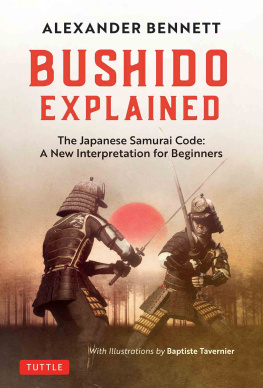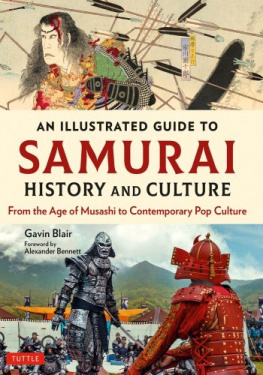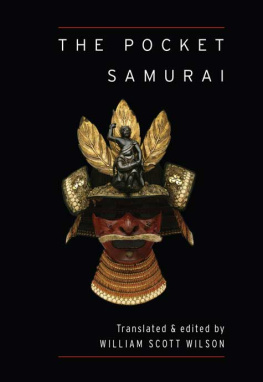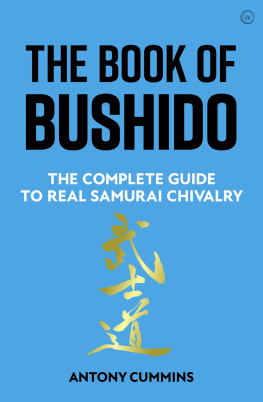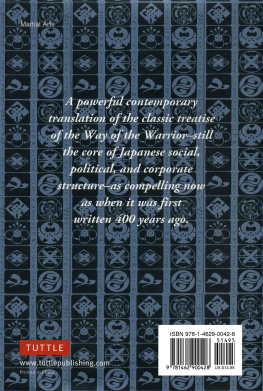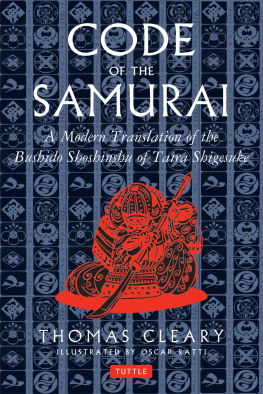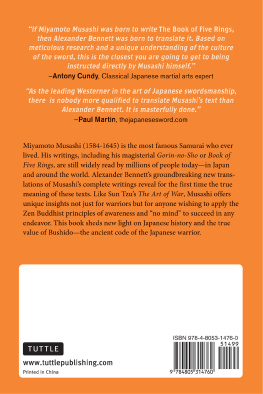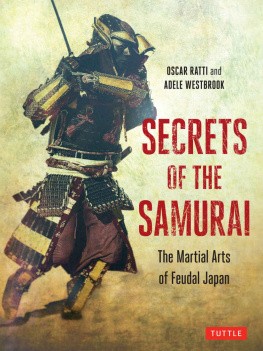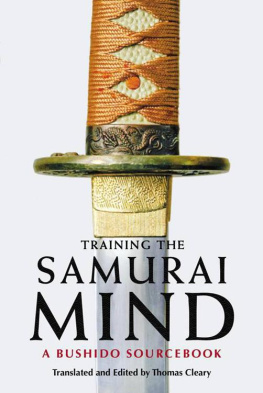JAPAN
The Ultimate Samurai Guide
An Insider Looks at the Japanese Martial Arts and Surviving in the Land of Bushido and Zen
ALEXANDER BENNETT

Preface
BUDO FOR THE SOUL
A GUIDE FOR THE MODERN GAIJIN SAMURAI (GAI-SAM)
I first came to Japan from New Zealand in 1987 as a 17-year-old high school exchange student. It was then that I decided to try my hand at Kendo. I had never seen it before, nor did I have any intention of taking up a martial art before arriving in Japan. But Kendo just looked cool, like a scene out of Star Wars. I joined the schools club with little inkling of what Budo (Japanese martial arts) were, let alone the physical and mental ordeal I was about to be subjected to over the ensuing 12 months.
Despite the initial language and cultural barriers, I survived the arduous training sessions meted out by the clubs sensei, and the more I learned the more I realized that there was so much more to it than meets the eye. Acutely aware of only having scratched the surface, and being a sucker for punishment, I felt a burning desire to stay in Japan and embark on a personal quest of martial discovery.
With a mixture of trepidation and excitement, I set forth on my spiritual journey and immersed myself completely in the world of Budo. I was pretty nave in those days but I had a purity of mind and intent that kept me going through good times and bad.
Many questions whirled in my brain. Is Japanese culture, as most people seem to believe (including the Japanese themselves), truly impenetrable for foreigners? Can a foreigner learn the esoteric secrets of Samurai philosophy? Is it even relevant in Japan today, let alone outside of Japan? Whats the difference between Budo and Bushido? Is Bushido really a tangible code of ethics that permeates the Japanese lifestyle? Whats the difference between Budo and other sports? Are Japanese Budo masters superhuman? What should I look for in a teacher? What are realistic goals for a foreigner in Japan? Are the traditional training methods still valid? Where do I start and what should my priorities be? What is genuine Budo and what is fake? Am I allowed to question my teachers? Are the harsh methods of training that characterize Budo really necessary? More than anything else, what the hell do I think Im doing here?
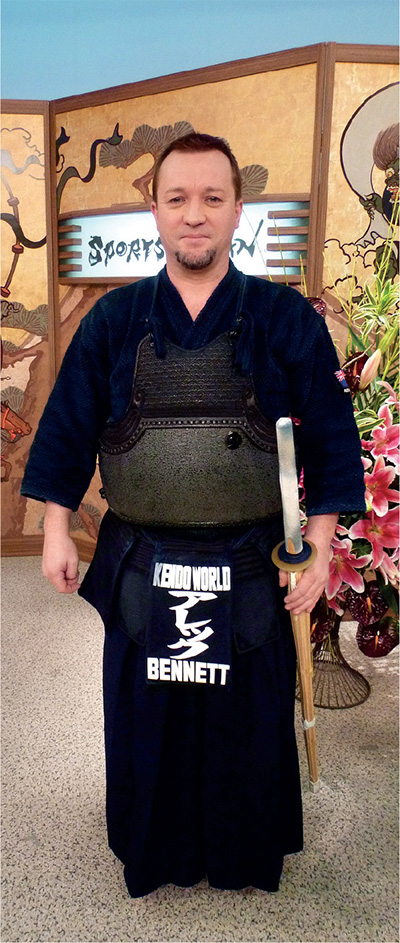
The author, Alex Bennett, has been living and studying the martial arts in Japan for 30 years. Holding the rank of 7th Dan in Kendo and high grades in several other martial arts, he has dedicated his career to researching and practicing Japans traditional Budo culture. He lives in Kyoto and teaches the theory and techniques of martial arts at Kansai University in Osaka.
I have chipped away at these questions over the past three decades of training and studying in Japan and, dare I say it, figured out most of the answers. I can confidently say that Budo is relevant to me, a gaijin (foreigner) living in Japan in the twenty-first century, and it has enhanced my life in many ways. It took time but I learned to distinguish fact from fiction and fantasy from reality. I have seen Budo from every anglethe good, the bad and the uglyand my fascination with it keeps growing.
The purpose of this book is to provide the kind of information that I wish I had when I started out. It is designed to demystify Budo for young non-Japanese who are about to set out on a similar path, or contemplating it. Think of it as the fundamental knowledge a gaijin-samurai (gai-sam for short) needs to know.
I use this term with a degree of tongue in cheek. Although ubiquitous, gaijin is not a particularly nice word. Sometimes it is downright discriminatory but I have come to embrace it all the same. The G-word is a part of my identity in Japan, as is Budo. Its from this standpointan unashamed non-Japanese Budo nutthat I explain the ins and outs of surviving this challenging but rewarding world.
I wrote this book from the heart. Its not a technical manual but a guide which aims to dispel false ideas and unrealistic hopes that might otherwise hinder you, the reader, in finding your own path of discovery through Budo. Many young (and not-so-young) Budo aficionados come to Japan harboring Samurai fantasies nurtured through films and manga comics. Alas, they often end up abandoning their pursuit of Budo soon after they start, either because their expectations are unreasonable or because they fail to find the Budo experience they are seeking. Based on my years of first-hand trials and tribulations, this book provides readers with the basic knowledge required to succeed in any Budo discipline in Japan. It targets Budo enthusiasts but I also hope it will be of interest to non-practitioners who are curious about Japan and the meaning behind the Budo cultural phenomenon. You might even feel compelled to give it a go!
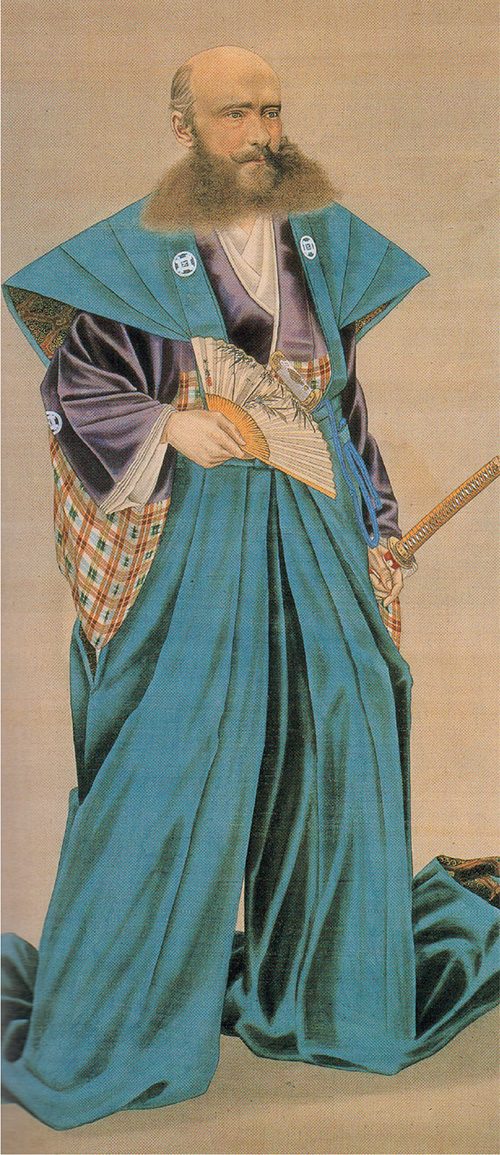
A Westerner dressed as a Samurai. Painted by Goseda Horyu, probably in the 1870s when Japan saw an influx of foreign visitors.
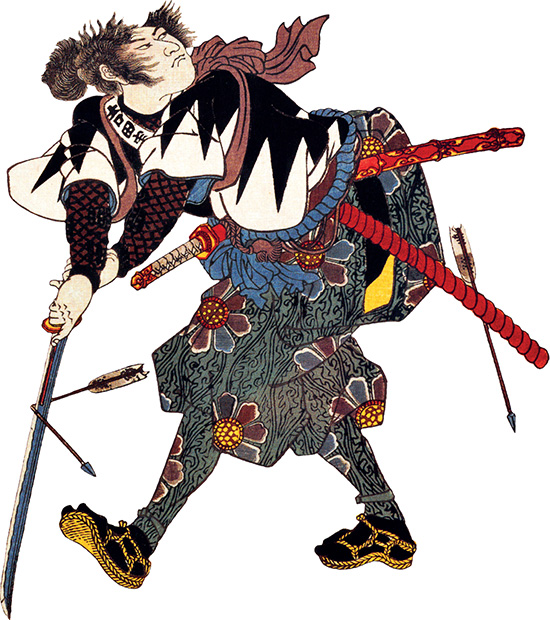
Woodblock print by Utagawa Kuniyoshi of Yoshida Sedaemon Kanesada, one of the 47 loyal Samurai.
Spelling Conventions
Japanese words and expressions have been divided into their most logical components to assist reading and pronunciation. Japanese terms have been Romanized according to the Hepburn system and italicized, but macrons have not been used to approximate long vowel sounds. Japanese names are listed in the conventional Japanese order with the surname first. Japanese words found in most standard English dictionaries and names of the modern Budo disciplines are treated as Anglicized words or proper nouns. Organizations such as the Nippon Budokan and the Dai-Nippon Butokukai are commonly referred to as Budokan and Butokukai and are sometimes shortened as such. All era dates in this book are quoted according to conventions used in the Kodansha Encyclopedia of Japan. Many of the historical figures mentioned in the text changed their names during their lives but I have used the most familiar versions. The birth and death dates for a number of historical figures are impossible to verify but I have also used the generally accepted dates.
To the uninitiated, Budo may seem like the domain of athletic meatheads but thats not what it is supposed to be about. Like a fine wine, the Budoka gets better with age and you are never too old to start.
CHAPTER 1
WHO WERE THE SAMURAI?

The word Samurai represents all that is considered noble by the Japanese peoplebravery, humility, honor, loyalty and selflessness. National Japanese sports teams are sometimes referred to as Samurai. For example, Japans soccer team is called the Samurai Blue. In spite of their heroic image, it must be said that much of Japans warrior past was not particularly honorable. Moreover, the prevailing notion that modern Japanese people are heirs of the Samurai spirit by virtue of their DNA is problematic, to say the least. What you believe and take on board is up to you, but if you live in Japan you should make an effort to learn the basics of Japanese history. Coming to terms with the complexities of this fascinating subject is not easy, so this chapter will provide the fundamental knowledge needed to put it all in context. There is no room to give bios on all the Samurai I find interesting. But at the very least the gai-sam should know a little bit about the five I have included in the following pages. Its also a good idea to learn about famous Samurai who feature in the lore of the place where you live in Japan. Modern Japanese are very proud of local Samurai legends and still harbor bitter one-eyed prejudices against their heroes historical foes.
Next page

